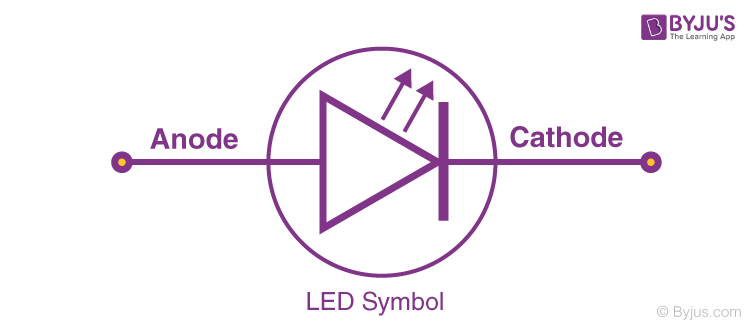
Light Emitting Diode
What is the full form of LED?
The full form of LED is Light Emitting Diode. The LED is a PN-junction diode that produces light as it passes via an electric current in the forward path. Recombining the charge carrier occurs in the LED. The N-side electron and the P-side hole are mixed and provide the energy in the form of light and heat. The LED is produced from the colourless semiconductor substance, and the light is radiated via the diode junction. Depending on the semiconductor material used and the doping quantity, a colored light will be emitted at a specified spectral wavelength when LEDs is biased forward.
Symbol

The symbol of the LED is similar to the symbol of the p-n junction diode. The distinction between those two symbols is that the two arrows indicate the diode emitting the light as shown below,
Working Principle
Light-emitting diodes are semiconductor light producers that combine a type P semiconductor with a higher concentration of a hole and a type N semiconductor with a higher concentration of electrons. Applying a proper forward voltage at the P-N junction will cause the electrons and holes to recombine and release energy in the form of light.
Types of LED
The different types of LED are designed using semiconductors are listed below.
- Miniature LEDs
- Lighting LED
- Red Green Blue LEDs
- Flash LED
- High-Power LEDs
- Alphanumeric LED
Applications of LED
LEDs are used in various fields, including warning systems, optical communications and security systems, robotics, remote-controlled operations, etc. Due to its long-lasting capacity, low power demands, quick response time and rapid switching capabilities, it finds use in many of these areas such as
- Used in various displays
- Used in the dimming of light
- Used in the automotive industry
- Used in TV backlight.


Comments